Sighting a Royal Bengal Tiger in the wild leaves a lasting and profound impact, and tourists from far and wide come to India in the hope of seeing one. With travel and wildlife photography becoming a popular hobby among young urban Indians, lesser-known tiger reserves are catching up with the big names in India, which boasts a whopping 52 tiger reserves.
“Watching a tiger in the wild is exhilarating,” says wildlife photographer Joydeep Mondal who runs Wildchasers India, curating bespoke wildlife experiences for discerning travellers. “Luxury hotels now provide a more sensible approach to wild explorations. They also share knowledge and guidance on how people should treat the wild when holidaying, which I think is the only way to protect these national parks and yet improve tourism revenue,” shares Joydeep.
Look beyond the obvious sanctuaries for a quieter, unhurried experience. The Tadoba Andhari Tiger Reserve in Maharashtra, for instance, has become a hotbed for tiger spotting, with guests sometimes seeing more than five big cats on a single safari.
In Satpura National Park (Madhya Pradesh), Tipeshwar Wildlife Sanctuary (Maharashtra), Sariska Tiger Reserve (Rajasthan), Dudhwa Tiger Reserve (Uttar Pradesh) and Panna Tiger Reserve (Madhya Pradesh), the story is similar thanks to their successful rehabilitation of tigers. Now, hospitality businesses are realigning themselves for responsible travellers who want to see a tiger, but also experience the wild — with a touch of luxury.
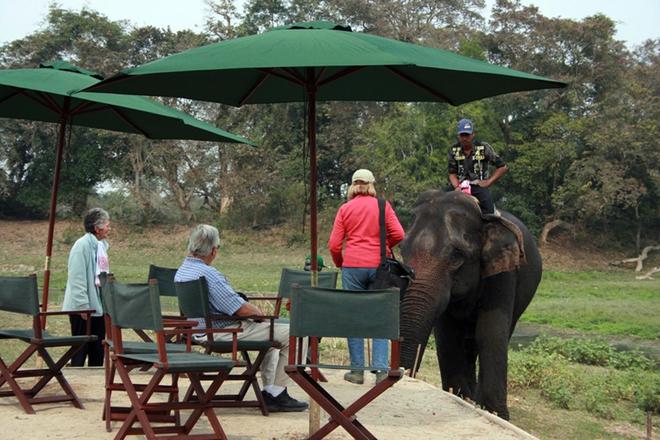
Beyond tigers
Rewilding efforts by luxury boutique hotels are helping revive habitats, whilst offering luxury accommodation nestled in the wilderness. In the form of cottages, tree houses and glamping tents, innovatively designed hotels in the wild are satiating the modern Indian traveller’s demand for an uber-luxe holiday.
Resorts now encourage visitors to look beyond tigers at safari breakfasts. To do this they offer a gamut of curated activities that include performances, village visits and story sessions with trained naturalists.
When staying at Bori Safari Lodge in Satpura, a guided Nature walk in the Dhapada village can be rewarding with sightings of various birds, native and migratory, including the occasional grey hornbill heading home.
“We have introduced horseback safaris, and mobile camping on the riverbed under the stars. Turning fishermen into canoe operators for a canoe safari has helped generate an income as fishing on the river was banned,” shares Aly Rashid, director and CEO at Jehannuma Wilderness, which runs Bori and the Reni Pani jungle lodge. Adding that Satpura is one of the few parks allowing a walking safari in the core area, he explains that they do walking bird safaris which are silent and low-impact activities.
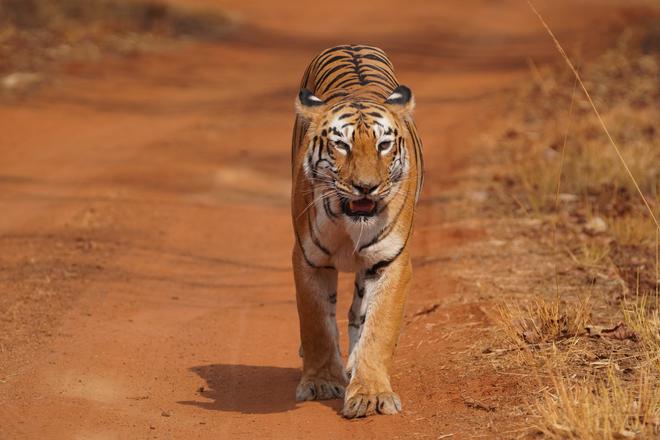
Hospitality businesses are also attempting to give tourists a taste of the local life. Manav Khanduja, director of Pugdundee Safaris, which operates seven eco-conscious luxury resorts in India, says that they encourage their guests to visit local village homes and experience rural customs. They also offer walks run by trained naturalists to show visitors the wide variety of flora and fauna in the region, says Manav.
At Saj In The Forest, a new property in Pench that is trying to change the perception of the destination as a mere weekend getaway, guests can learn pottery from generational potters from a nearby village, visit their home and purchase items at a steal deal directly from the makers.
During a stay at Diphlu River Lodge in Kaziranga in Assam, you can visit a Bodo or Mising village. The lodge, composed of thatch-and-bamboo cottages on stilts, is also inspired by the simple architecture of Mising tribal homes. Diphlu arranges river cruises and rubber plantation walks for guests. And even if you do not participate in these, you can enjoy the wild as the lodge has no fencing between its premises and the Kaziranga National Park to maintain the animal corridor.
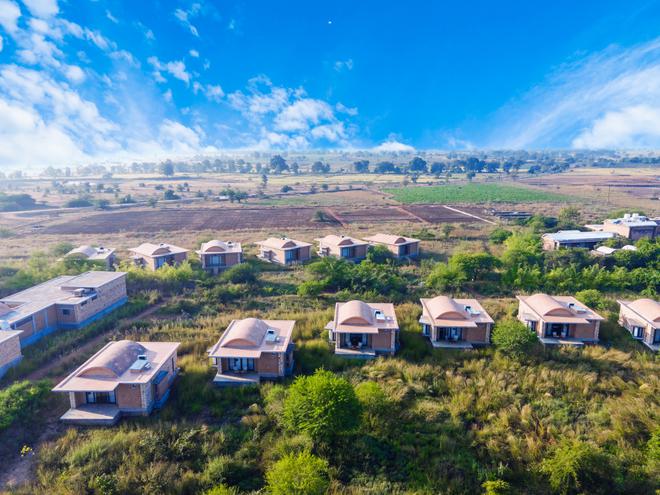
Eco-conscious luxury
Keyur Joshi, founder of Tipai by Wildlife Luxuries, employs locals from the village to work at his forest villas and pool residences located adjacent to the Tipeshwar Wildlife Sanctuary. He believes that the ability to think beyond standardised luxury helped him envision the 34-acre property. Keyur says, “With no hospitality industry baggage, we were free to reimagine everything that a sustainable luxury stay could be, from design to customised experiences for each guest.”
Wildlife Luxuries offers bespoke luxury villa accommodations with natural pools free of chemicals. A stay at a pool villa in Tipai is close to ₹55,000 for two persons, while a stay at any of the Pugdundee Resorts will cost upwards of ₹20,000. Here, the list of experiences includes an immersive village walk, a safari, and an adventurous bush dinner among others. Saj in Pench offers a pristine backwater safari at an undisclosed location to keep it exclusive.
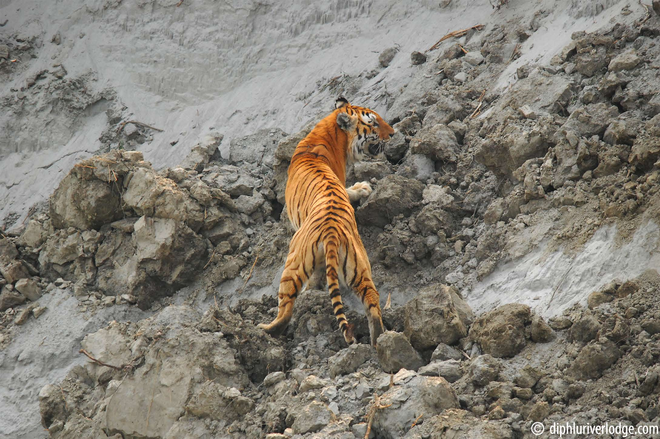
“The definition of luxury travel is evolving from just state-of-the-art amenities to enriching experiences curated around the natural surroundings, local communities, culture, and food of the destination,” says Sneha Merchant, who runs Episodes, a boutique travel company in Bengaluru. The Ultimate Travelling Camp offers a sophisticated canvas-top safari experience in the heart of Bandhavgarh for close to ₹45,000 per night. Offering luxury tented camps, tastefully designed and fully equipped with a private sit-out, as well as butler service, such properties prioritise keeping the surrounding Nature intact.
Sustainability in luxury
Sustainability too is a rage among the new resorts springing along the forest belts. However, the real test of being sustainable comes with managing costs to plug back into the local economy as much as possible. Ban of single-use plastic comes with additional challenges, but some of these resorts have resiliently set themselves rules and stuck to them. “Luxury for us has never been about room sizes, facilities, or expensive hardware at Pugdundee Safaris. Luxury for us is driven by our honest approach to sustainability, including the metal bottles we provide our guests, with a refilling station at the lobby,” says Manav.
His vision of eco-friendly construction at Waghoba Eco Lodge in Maharashtra’s Tadoba Andhari National Park is a testament to the brand’s commitment to conscious design. The lodge features handmade Adobe earth bricks and vaulted ceilings, a feature also notable at Tipai in the Yavatmal district. Eco-sensitive construction allows the villas to stay cool even during peak summer in the Vidarbha region.
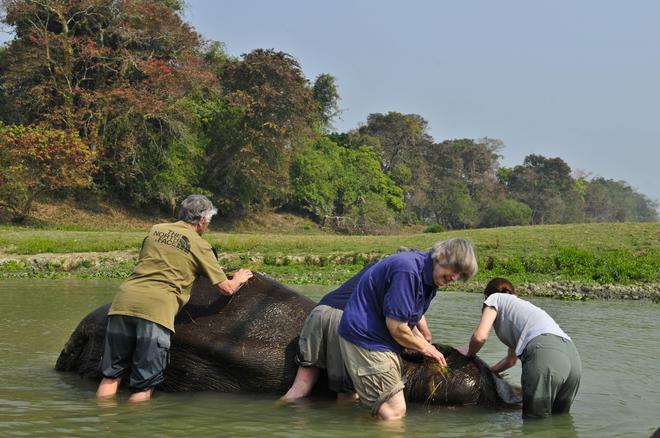
In Pali, Rajasthan, located close to both Jawai Bandh where leopards are seen roaming freely on the Aravalli hill outcrops as well as Todgarh Wildlife Sanctuary, Brij Lakshman Sagar features a 19th-Century hunting lodge that has been reimagined to offer 12 luxury mud cottages, borrowing ideas from the locals. The interiors resemble a Rajasthani village home, enhanced with day beds and a handcrafted plunge pool. The area that once used to trap wild animals before shooting them is now a pottery studio.







